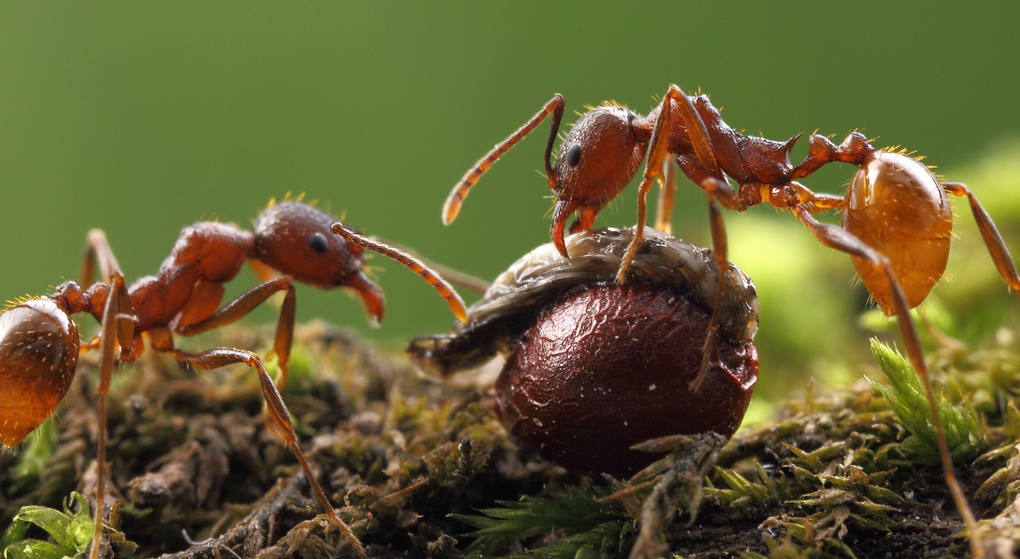Causes and Consequences of Ant Diversity
We study what causes ants to be so diverse in some parts of the world and practically absent from others. We study ants because they are fascinating, but also because they represent a huge fraction of animal biomass and play crucial roles in ecosystem functioning.
Most arthropods are insects, which alone account for 90% of all animal species on the globe. Our understanding of how insect diversity might affect key ecosystem processes such as carbon cycling is, nevertheless, limited. Some insect groups likely contribute disproportionally to ecosystem functioning due to their high biomass and particular life histories. In particular, ecosystem engineers such as ants shape the physical, chemical and biological characteristics of soils in most terrestrial ecosystems.
Relevant references
Gibb H, Bishop TR, Leahy L, Parr CL, Lessard JP, Sanders NJ, Shik JZ, Ibarra-Isassi J, Narendra A, Dunn RR, Wright IJ. (2023) Ecological strategies of pl(ant)s: toward a world-wide worker economic spectrum for ants. Functional Ecology 37: 13–25
Despland E, Lessard JP. Social predation by ants as a source of mortality for an arboreal gregarious forest pest. Basic and Applied Ecology. doi.org/10.1016/j.baae.2022.01.001
Lessard JP, Stuble KL, Sanders NJ. (2020) Do dominant ants affect secondary productivity, behavior, and diversity in a guild of woodland ants? Diversity 12, 460.
Chick LD, Lessard JP, Dunn RR, Sanders NJ. (2020) The coupled influence of thermal physiology and biotic interactions on the distribution and density of ant species along an elevational gradient. Diversity 12, 456.
Fowler D**, Lessard JP, Sanders NJ. (2014) Niche filtering rather than partitioning shapes the structure of temperate forest ant communities. Journal of Animal Ecology 83:943-952.
Lessard JP, Sackett TE, Reynolds WN, Fowler DA, Sanders NJ. (2011) Determinants of the detrital arthropod community structure: the effects of temperature, resources, and environmental gradients. Oikos 120: 333-343
Weiser MD, Sanders NJ, Agosti D, Ellison AM, Fisher BL, Gibb H, Gotelli NJ, Gove AD, Guenard B, Janda M, Kaspari M, Lessard JP, Longino JT, Majer JD, Menke SB, McGlynn TP, Parr CL, Philpott SM, Retana J, Suarez A, Vasconcelos HL, Yanoviak SP, Dunn RR. (2010) Canopy and litter ant assemblages share similar climate–species density relationships. Biology Letters 6: 769-772
Lessard JP, Dunn RR, Sanders NJ. (2009) Temperature-mediated coexistence in temperate forest ant communities. Insectes Sociaux 56: 149-156
Dunn RR, Agosti D, Andersen AN, Bruhl CA, Cerda X, Ellison AM, Fisher BL, Fitzpatrick MC, Gibb H, Gotelli NJ, Gove AD, Guenard B, Janda M, Kaspari M, Laurent EJ, Lessard JP, Longino JT, Majer JD, Menke SB, McGlynn TP, Parr CL, Philpott SM, Pfeiffer M, Retana J, Suarez AV, Vasconcelos HL, Weiser MD, Sanders NJ. (2009) Climatic drivers of hemispheric asymmetry in global patterns of ant species richness. Ecology Letters 12: 324-333
Sanders NJ, Lessard JP, Dunn RR, Fitzpatrick MC. (2007) Temperature, but not productivity or geometry, predicts elevational diversity gradients in ants across spatial grains. Global Ecology and Biogeography 16: 640-649
Lessard JP, Dunn RR, Parker CR, Sanders NJ. (2007) Rarity and diversity in forest ant assemblages of Great Smoky Mountains National Park. Southeastern Naturalist (special issue) 1: 215-228
Davidson DW, Lessard JP, Bernau CR, Cook SC. (2007) Tropical ant mosaic in a primary Bornean Rain Forest. Biotropica 39: 468-475
Lessard JP, Buddle CM. (2005) The effects of urbanization on ant assemblages associated with the Molson Nature Reserve, Quebec. Canadian Entomologist 137: 215-225
